Wood Lexicon
Some expressions and technical words around solid wood and veneers.
Back:
Panels and boards have two main sides called Face and Back.
The Face side is usually the most visible, such as table tops, while the Backside, called back, is less visible and sometimes not visible, such as the back of a wall panel.
When discussing decorative veneered panels, the word back also means the veneer grade used to balance the face side to prevent the panel from bending. It is also called balancing grade.
Whether little visible or non-visible, the back is generally made of a technically sound veneer but aesthetically of lesser beauty, which allows a much cheaper cost.
Crotch:
The crotch is part of the tree trunk that separates into two main branches.
With a lot of cross-grain, it gives magnificent designs and reflections.
For stability reasons, the crotch is more easily found in veneer than lumber.
However, this remains a rarity because crotches are challenging to produce correctly.
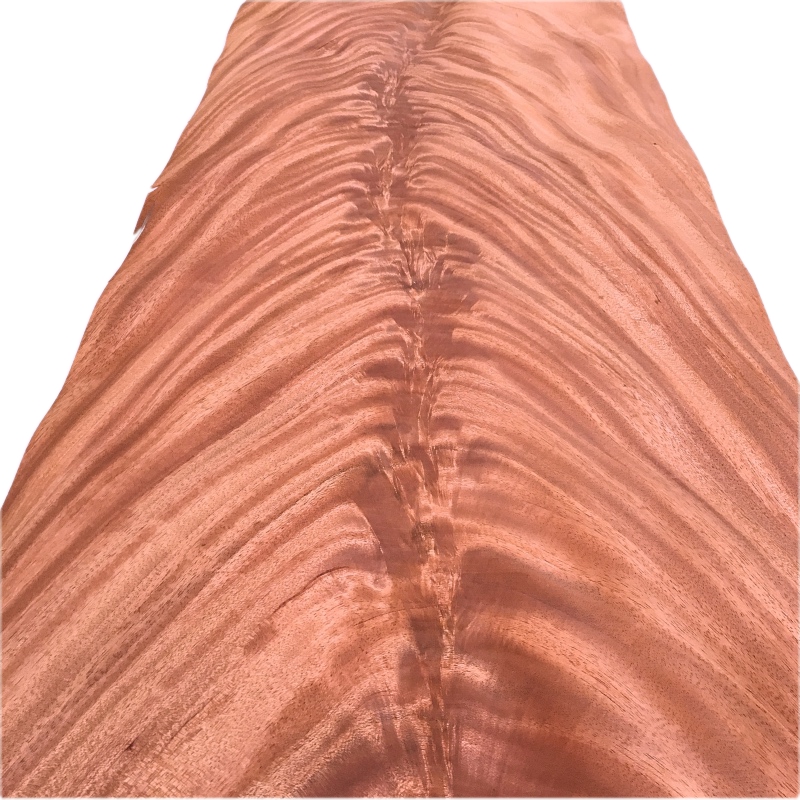
Crown:
This name describes the pattern obtained when tangentially slicing a log.
It shows curves ranging from regular cathedral arches to wild patterns.
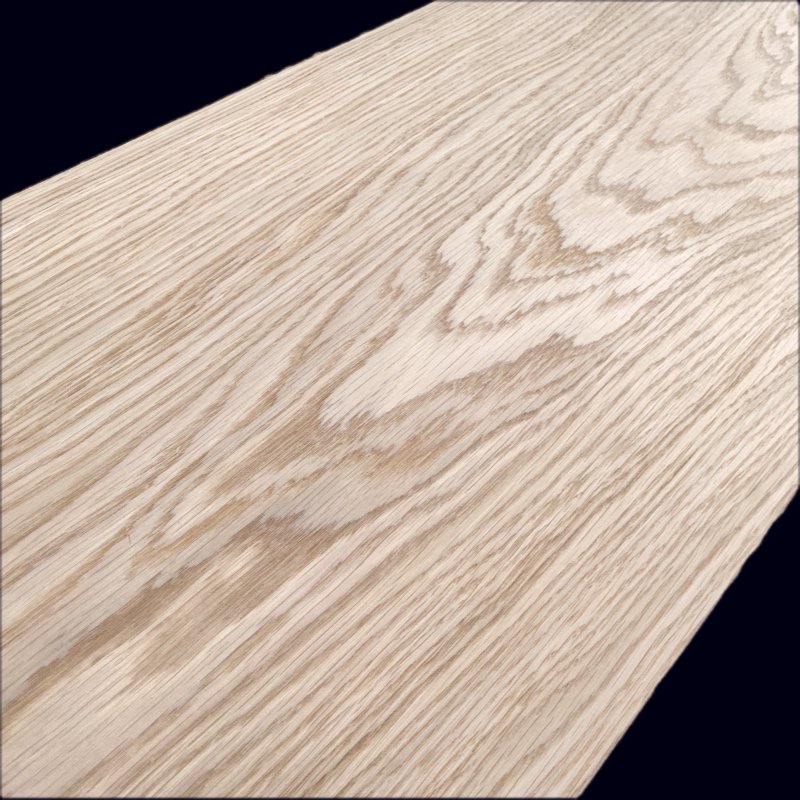
Buckled:
Said about nervous veneers that form hard bumps.
There are several methods to flatten these veneers so they can be used easily.
It is noted that burl or crotch veneers are generally buckled due to multiple counter-grains.
Burl:
The burl is a pattern of small pin-knots next to each other, making its character unique.
This specialty is a rarity. Highly sought-after for its aesthetics, the burl also means that some of these pinknots are piercing, and open splits are considered part of this type of wood.
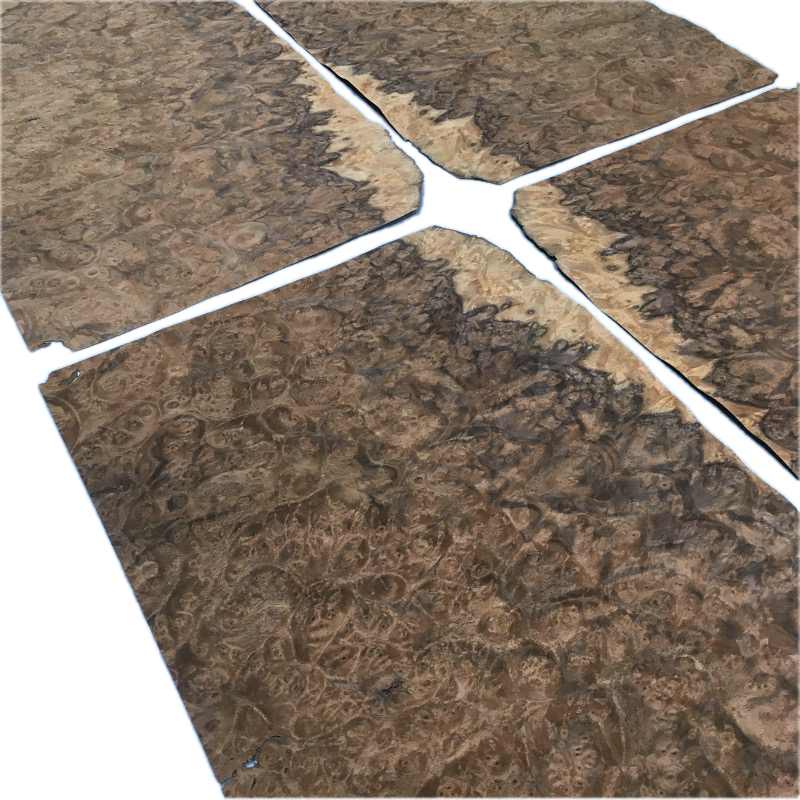
Edge band:
Ordinary edge bands are generally made of plastic or printed paper.
You will find genuine wood edge bands on the site, pre-sanded, unglued, unvarnished, cut parallel, and backed with a fleece back.
The lengths are finger-jointed with an irregular pattern for a transition from one length to another that is difficult to detect.
They are commonly used to cover the edges of MDF panels, plywood, chipboard, and even cheap massive wood.
Thus, once veneered with decorative wood veneers on their two faces, the board will no longer be visible, giving the appearance of noble massive wood on all sides.
Edgebanding can also cover the edges of furniture and the sides of doors.
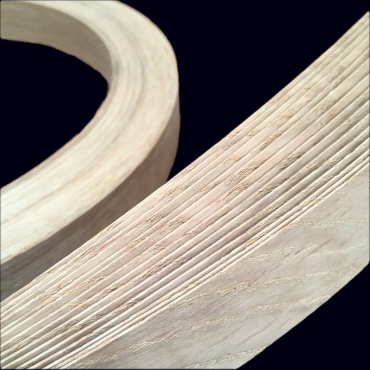
Figured:
Figured is applied to woods with a special effect, such as fiddled back, pommele, curly, quilted, etc...
These special effects are mainly due to multiple counter-grains.
Fiddled back:
A fiddle is another term for a violin; traditionally, some violins have a back made of figured Sycamore; when a Sycamore is strongly figured, it's called fiddled back Sycamore.
By deformation, other curly species are called fiddled {name of the species}.
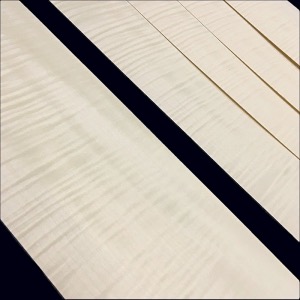
Flake:
The flake is, in a way, the bone structure of the tree's trunk.
Many species have flakes, but most of the time, they are unnoticeable.
On the contrary, flake is a prominent feature for some species, such as oak, planetree, or Louro faïa;
From a decorative point of view, these species are highly appreciated for their flaky appearance.
In solid wood, quarter-cut gives full-flake planks and are highly valued for their dimensional stability.
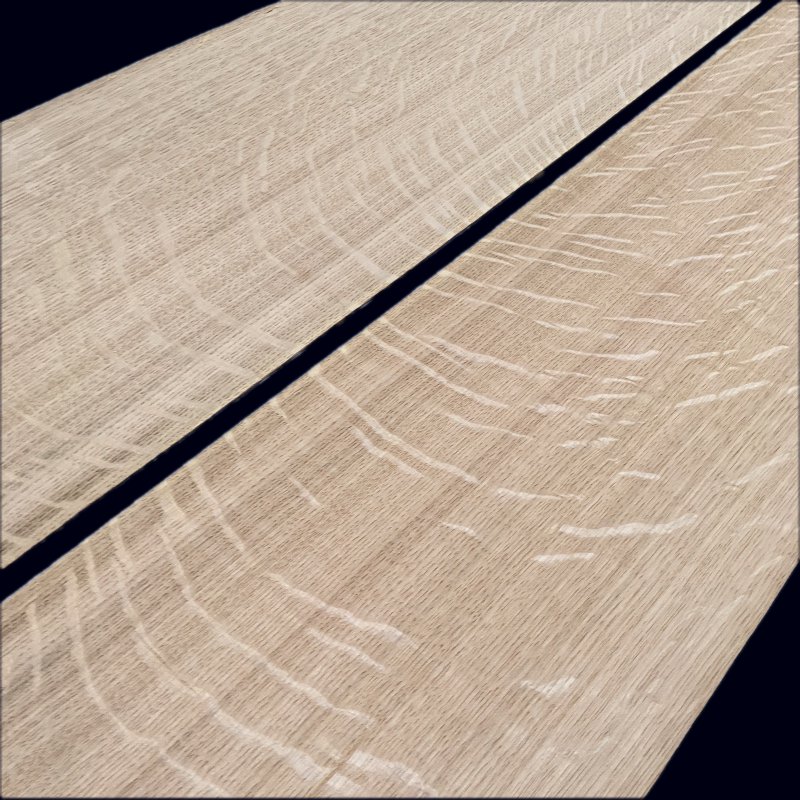
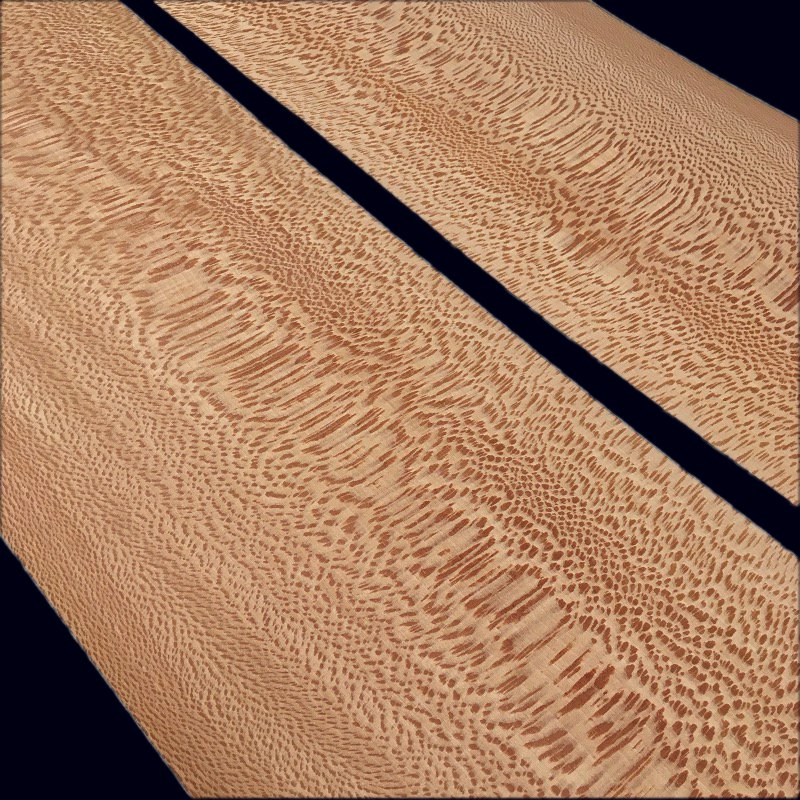
Half-crown:
Half crowns are veneers with half the crown structure, whose crown design is at least 50% of the width of a veneer.
Below 50%, we will speak of semi-quarter.
Massive wood:
By convention, lumber with more than 5 millimeters thickness is considered massive.
However, the most common thicknesses in Europe are 27, 32, 41, 50, or 54 mm.
Live edge:
Live edge boards are sawn planks with edges left uncut to give a raw style to furniture, such as dining tables or desks.

Pommele:
It is an aesthetic figured particularity of some species.
The name pommele is a French word meaning: the shape of an apple.

Planing:
Plane the surface of the wood with a plane, whether mechanical or manual.
This action makes it possible to opt for a surface that is ready to sand but also that the facing of the piece of wood is parallel to the backing.
Quarter-cut:
This is the design made by the structure of the wood when it is straight and develops little or no curved structure.
The quarter-cut takes its name from how it is generally produced: logs are sawn in 4 quarters, and each quarter is sliced or sawn individually to produce quarter-cut veneers or boards.
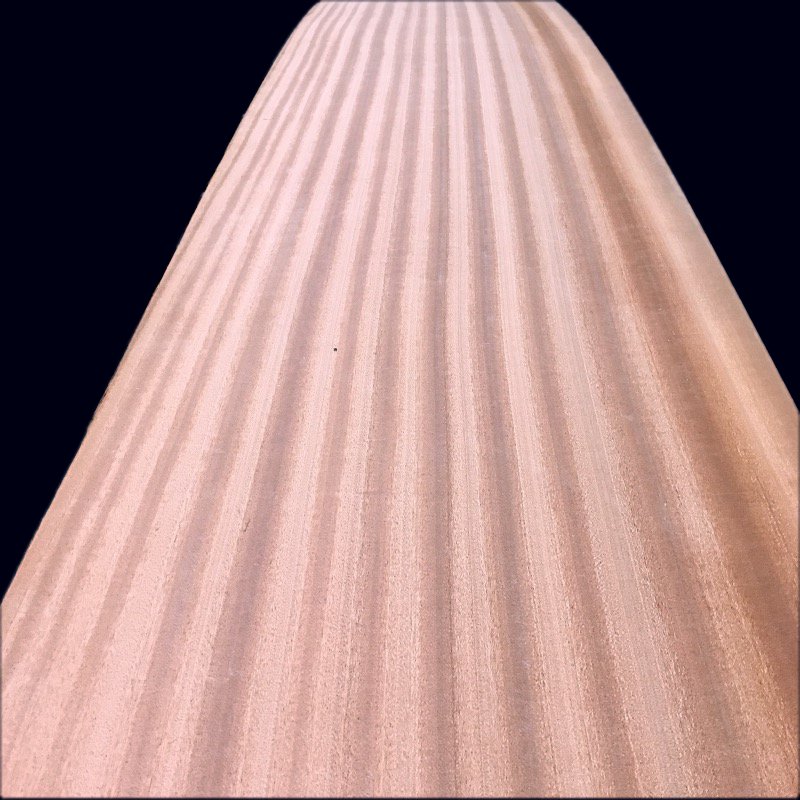
Semi-quarter:
It is a wood pattern mainly composed of straight lines with some crown pattern on the side.
With two consecutive sheets, the semi-quarter allows a book-match splicing to recreate a crown design.
We will speak of a half-crown if the crown pattern exceeds half the width.
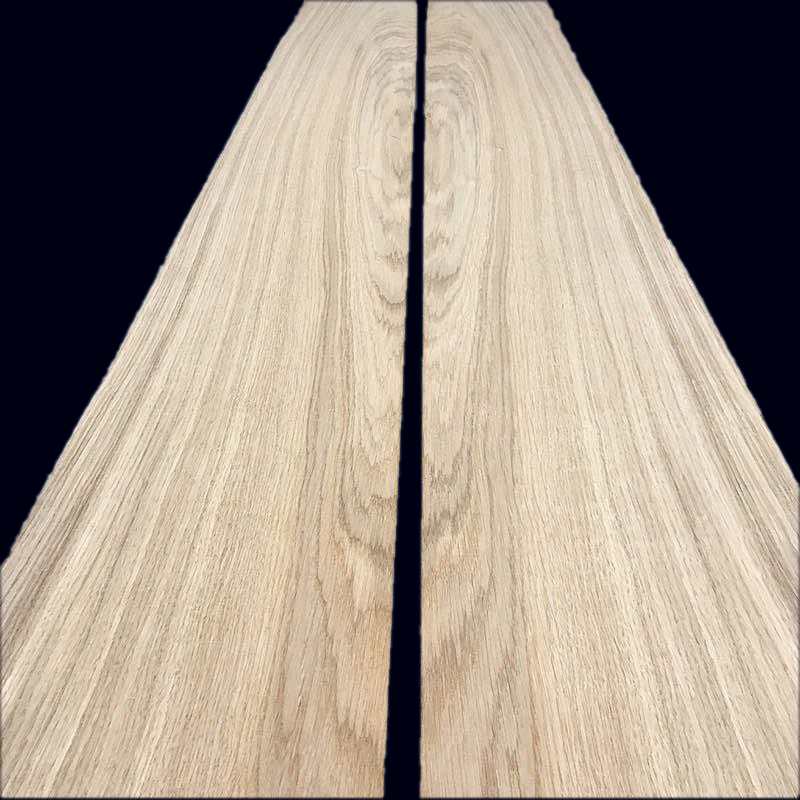
Species:
It is the species, the common name of a wood or a tree, such as Oak, Beech, Ash, etc...
Splicing:
It is assembling veneers side by side to obtain a larger veneer sheet, for example, to make a tabletop or a panel.
There are several methods to splice, with paper, masking tape, or glue.
Square edged:
Refers to swan boards (planks) with four sharp edges.
Generally, the square-edged pieces are made on fresh-cut wood, leading to a more or less pronounced board deformation during drying.
There are also edged boards made from live edge boards, dried beforehand; this operation offers remarkably straight boards.
However, the material yield and the additional operation make this square-edged lumber considerably more expensive.
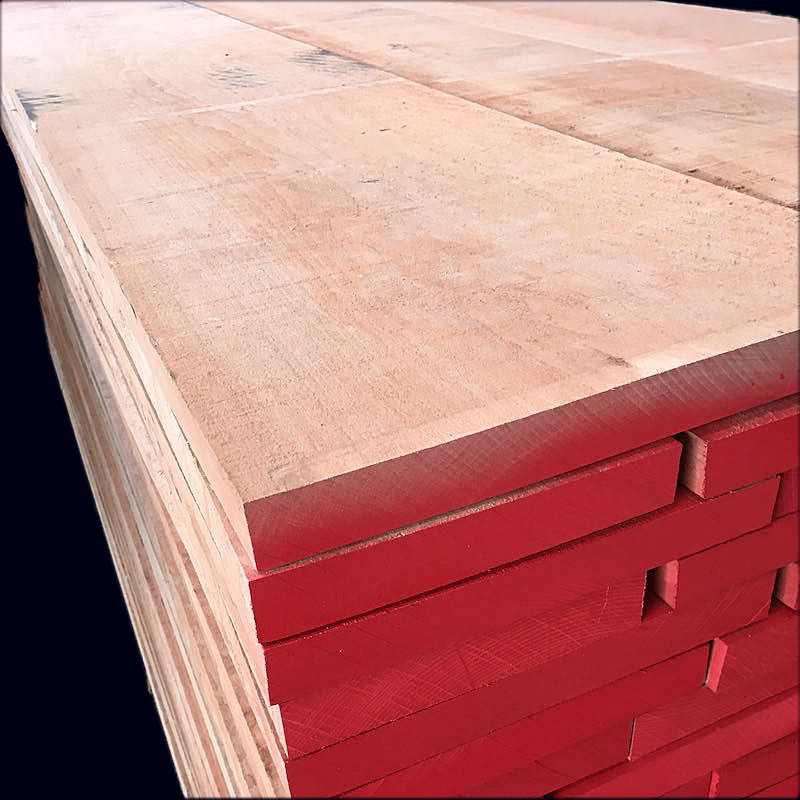
Straighten out:
Straightening out by plane, a piece of solid wood naturally deformed upon drying.
Veneer:
A veneer is usually a sheet of wood, often sliced, peeled, and sometimes sawn.
The standard thickness in Europe is between 0.5 mm and 0.6 mm, depending on the species and the slicing factory.
Sliced veneers are generally precious or semi-precious woods used in furniture making, decoration, and marquetry.
Precious woods are mainly sliced, but burls and clusters are typically peeled on slow-peeling machines.
Fast-peeling machines are reserved for more industrial wood products, such as plywood.
 English
English

